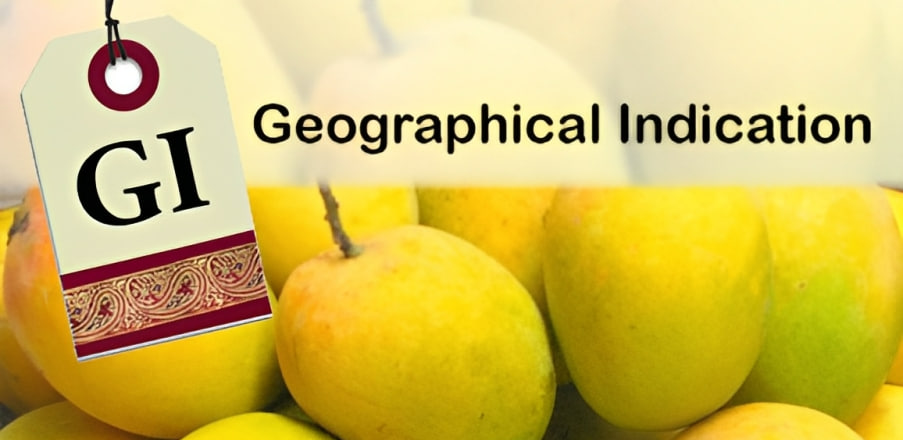
Copyright infringement not intended
Context: The Ishad mango, a native variety of Ankola taluk in Uttara Kannada district of Karnataka, has recently received the coveted geographical indication (GI) tag. This is a significant achievement for the farmers and producers of this delicious fruit, which has a rich history and heritage.
Details
- The Ishad mango is known for its thin skin, fleshy pulp and small seed. It has a sweet taste and a pleasant aroma. It is also called the Oriental mango, as it was once canned and exported to various countries under this name. The fruit has been cultivated for over 400 years in Ankola and its surrounding area.
- The GI tag will help protect the identity and uniqueness of the Ishad mango, as well as promote its cultivation and marketing.
- The Ishad mango has two variants: Kari Ishad and Bili Ishad. The former has thinner skin, more pulp and is sweeter than the latter, which has thicker skin and less pulp and sweetness. Both variants are harvested from mid-May and have a short shelf life of two or three days. However, the pulp can last for more than a year if stored properly.
.jpeg)
Geographical Indication (GI) Tag
About
- A Geographical Indication (GI) tag is a sign used on products that have a specific geographical origin and possess qualities or a reputation that are due to that origin.
- A GI tag enables the producers of such products to prevent unauthorized use of the indication by third parties who do not conform to the standards or criteria established for that product.
Origin
- The concept of GI has its roots in the Paris Convention for the Protection of Industrial Property (1883) and the Madrid Agreement for the Repression of False or Deceptive Indications of Source on Goods (1891).
- However, it was only in 1994 that a multilateral agreement on Trade-Related Aspects of Intellectual Property Rights (TRIPS) under the World Trade Organization (WTO) provided a comprehensive legal framework for the protection of GIs.
- In India, the Geographical Indications of Goods (Registration and Protection) Act 1999 came into force in 2003 to comply with the obligations under TRIPS. The Act provides for the registration and protection of GIs in India.
- The first product to get a GI tag in India was Darjeeling Tea in 2004. Since then, more than 430 products have been registered as GIs in India, covering a wide range of categories such as agricultural, foodstuff, handicraft, industrial, natural and manufactured products.
- Currently, Tamil Nadu leads with 55 GI-tagged goods, and UP and Karnataka follow with 48 and 46 GI products respectively.
Some of the features of a GI tag are:
- It is a collective intellectual property right that belongs to the producers or makers of the product in a defined geographical area.
- It is granted for a period of 10 years and can be renewed indefinitely.
- It is based on a code of practice that defines the quality, characteristics and reputation of the product.
- It is administered by a registered association or organization that represents the interests of the producers or makers of the product.
- It is enforced by the competent authorities at the national or regional level.
The GI tag has several benefits for the producers and consumers of such products. Some of these are:
- It preserves and promotes the cultural and historical identity of a region and its people by highlighting their distinctive skills, traditions and heritage.
- It increases the market value and competitiveness of the products by creating a niche segment and a loyal customer base who appreciate the quality and authenticity of the products.
- It ensures the quality and authenticity of the products by preventing counterfeiting and misrepresentation by unauthorized parties who may try to imitate or exploit the reputation of the products.
- It provides legal protection and enforcement against infringement and misuse of the indication by unauthorized parties who may violate the rights and interests of the legitimate producers and consumers of the products.
- It generates income and employment opportunities for the local communities involved in the production and processing of the products by enhancing their skills, capacities and livelihoods.
- It fosters innovation and creativity by encouraging the development and improvement of products by incorporating new technologies, methods and standards.
However, there are also some challenges and limitations associated with GI protection. Some of these are;
- Lack of awareness and knowledge among the producers and consumers about the concept and benefits of GI.
- High cost and complexity of registration and certification procedures.
- Inadequate infrastructure and facilities for the production, processing, packaging, storage and transportation of GI products.
- Low level of standardization and quality control among the producers.
- Difficulty in establishing traceability and monitoring systems for GI products.
- Vulnerability to biopiracy and misappropriation of traditional knowledge and resources associated with GI products.
- Competition from other similar or substitute products in the domestic and international markets.
To overcome these challenges and realize the full potential of GI protection, there is a need for a holistic and coordinated approach involving various stakeholders such as government agencies, producer groups, industry associations, research institutions, civil society organizations, media and consumers.
Some of the possible measures that can be taken are:
- Creating awareness and capacity-building programs for the producers and consumers on the GI concept, registration process, quality standards, marketing strategies, etc.
- Simplifying and streamlining the registration and certification procedures for GI products.
- Providing financial and technical assistance to the producers for improving their production methods, quality standards, packaging designs, branding strategies, etc.
- Developing infrastructure and facilities for the production, processing, storage and transportation of GI products.
- Establishing traceability and monitoring systems for GI products using modern technologies such as barcodes, QR codes, RFID tags, etc.
- Strengthening legal protection and enforcement mechanisms for GI products at national and international levels.
- Promoting research and innovation on GI products to enhance their quality, diversity and value addition.
- Encouraging collaboration and cooperation among different stakeholders for sharing best practices, experiences and resources related to GI protection.
- Creating platforms and networks for showcasing and marketing GI products at local, national and international levels.

Conclusion
- The geographical Indication (GI) tag is a valuable tool for protecting and promoting unique products that reflect the rich cultural and natural heritage of India. By adopting a proactive and participatory approach towards GI protection, India can leverage its GI potential to achieve economic, social and environmental benefits for its producers and consumers.
|
PRACTICE QUESTION
Q. GI tag products can help in promoting the local culture, heritage and biodiversity of a region, as well as creating employment and income opportunities for the producers. However, GI tag products also face many challenges, such as lack of awareness, marketing, quality control and legal protection. How can these challenges be overcome and what are the possible ways forward to enhance the value and competitiveness of GI tag products in the global market?
|
https://www.newindianexpress.com/good-news/2023/jun/12/ishad-mango-from-ankola-gets-gi-tag-2584086.html




